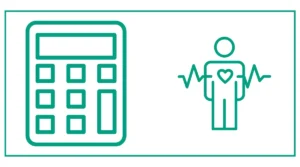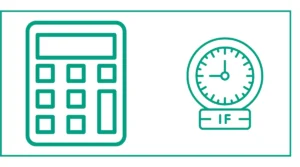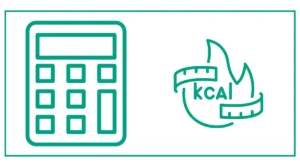Bruce Protocol METs Calculator helps you calculate your maximum heart rate, vo2 max, MET max, and overall ratings.
Choose your gender, and enter your age and exercise time to calculate the Burce Protocol METs.
In case you don't know, Robert A. Bruce, an American cardiologist, developed the Bruce protocol, a standard diagnostic test to measure heart function and physical fitness. In the original Bruce protocol, the patient walks uphill on a treadmill while electrodes are placed on the chest to keep track.
Blood pressure and heart rate are checked during exercise, and the patient is watched for symptoms like chest pain, shortness of breath, dizziness, or tiredness.
During treadmill exercise stress testing, the Bruce protocol is the one that is used most often.
This plan is broken up into three-minute stages, and in each stage, the patient has to walk faster and up a steeper slope.
The testing protocol could be changed based on how much a patient could handle, with the goal being 6 to 12 minutes of exercise.
You might want to calculate the stroke volume or creatinine ratio.
The Bruce Protocol and METs Calculator is a valuable tool for assessing cardiovascular fitness and exercise capacity. This calculator combines the principles of the Bruce Protocol treadmill test with the concept of Metabolic Equivalents (METs) to provide a comprehensive evaluation of an individual's fitness level. In this article, we'll explore the components of this calculator, its applications, and how to interpret the results.
What is the Bruce Protocol?
The Bruce Protocol is a standardized treadmill test used to evaluate cardiovascular fitness and diagnose heart conditions. Developed by Dr. Robert A. Bruce in 1963, this protocol has become one of the most widely used exercise tests in cardiology and exercise physiology.
How the Bruce Protocol Works
During the Bruce Protocol treadmill test, participants walk or run on a treadmill while the speed and incline gradually increase every three minutes. The test typically consists of seven stages, each lasting three minutes. As the test progresses, the workload becomes more challenging, allowing healthcare professionals to assess the participant's exercise capacity and cardiovascular response.
Stages of the Bruce Protocol
- Stage 1: 1.7 mph at 10% grade
- Stage 2: 2.5 mph at 12% grade
- Stage 3: 3.4 mph at 14% grade
- Stage 4: 4.2 mph at 16% grade
- Stage 5: 5.0 mph at 18% grade
- Stage 6: 5.5 mph at 20% grade
- Stage 7: 6.0 mph at 22% grade
The test continues until the participant reaches their maximum effort or experiences symptoms that require stopping the test, such as chest pain or severe fatigue.
Understanding METs (Metabolic Equivalents)
Metabolic Equivalents, or METs, are a standardized way to measure the intensity of physical activities. One MET represents the amount of oxygen consumed while sitting at rest, which is approximately 3.5 milliliters of oxygen per kilogram of body weight per minute (3.5 mL/kg/min).
Importance of METs in Fitness Assessment
METs provide a convenient way to compare the energy cost of different activities and assess an individual's exercise capacity. Higher MET values indicate more intense activities and greater fitness levels. For example:
- Light activities (e.g., slow walking) typically range from 1-3 METs
- Moderate activities (e.g., brisk walking) usually fall between 3-6 METs
- Vigorous activities (e.g., jogging) generally exceed 6 METs
Healthcare professionals and fitness experts use METs to:
- Prescribe appropriate exercise intensities
- Assess cardiovascular fitness
- Estimate energy expenditure during physical activities
- Monitor progress in exercise programs
The Bruce Protocol METs Calculator
The Bruce Protocol METs Calculator combines the principles of the Bruce Protocol treadmill test with MET calculations to provide a comprehensive assessment of cardiovascular fitness. This tool allows users to estimate their maximal METs and VO2 max based on their performance during the Bruce Protocol test.
How to Use the Calculator
To use the Bruce Protocol METs Calculator, you'll need to input the following information:
- Sex (male or female)
- Age
- Time completed on the Bruce Protocol test (minutes and seconds)
Once you've entered this data, the calculator will provide the following results:
- Estimated maximum heart rate
- Estimated VO2 max (maximal oxygen consumption)
- Estimated maximal METs
- Fitness rating based on the calculated METs
Interpreting the Results
Maximum Heart Rate
The calculator estimates the maximum heart rate using the formula: 192 - (0.007 × age²). This provides a general guideline for the highest heart rate an individual should reach during maximal exercise.
VO2 Max
VO2 max, or maximal oxygen consumption, is considered the gold standard for measuring cardiorespiratory fitness. It represents the maximum amount of oxygen an individual can utilize during intense exercise. The calculator estimates VO2 max based on the Bruce Protocol test performance.
Maximal METs
The calculator determines the maximal METs achieved during the test using sex-specific equations:
- For males: METs = (14.8 - (1.379 × time) + (0.451 × time²) - (0.012 × time³)) / 3.5
- For females: METs = (4.38 × time - 3.9) / 3.5
These equations take into account the time completed on the Bruce Protocol test to estimate the maximal exercise capacity in METs.
Fitness Rating
Based on the calculated maximal METs, the calculator provides a fitness rating:
- Very poor: < 8.6 METs
- Poor: 8.6 - 9.9 METs
- Below average: 10.0 - 11.3 METs
- Average: 11.4 - 12.2 METs
- Above average: 12.3 - 13.9 METs
- Good: 14.0 - 15.9 METs
- Excellent: ≥ 16.0 METs
This rating helps individuals understand their current fitness level and provides a basis for setting fitness goals and tracking progress over time.
Applications of the Bruce Protocol METs Calculator
The Bruce Protocol METs Calculator has several practical applications in healthcare, fitness, and research settings:
1. Cardiovascular Health Assessment
Healthcare professionals use this tool to evaluate patients' cardiovascular health and assess their risk for heart disease. A higher MET capacity is generally associated with better cardiovascular health and a lower risk of cardiac events.
2. Exercise Prescription
Fitness trainers and exercise physiologists can use the calculator results to design appropriate exercise programs. Knowing an individual's maximal METs helps in prescribing exercises at the right intensity to improve cardiovascular fitness safely and effectively.
3. Monitoring Fitness Progress
Regular use of the Bruce Protocol METs Calculator allows individuals and healthcare providers to track changes in cardiovascular fitness over time. This is particularly useful for evaluating the effectiveness of exercise interventions or cardiac rehabilitation programs.
4. Research Studies
Researchers often employ the Bruce Protocol and METs calculations in studies related to cardiovascular health, exercise physiology, and fitness interventions. The standardized nature of the test allows for consistent comparisons across different populations and studies.
5. Athletic Performance
While not a substitute for sport-specific testing, the Bruce Protocol METs Calculator can provide valuable insights into an athlete's overall cardiovascular fitness. This information can be used to guide training programs and assess general endurance capacity.
Limitations and Considerations
While the Bruce Protocol METs Calculator is a useful tool, it's important to consider its limitations:
- Estimation: The calculator provides estimates based on general equations and may not account for individual variations in fitness or physiology.
- Test Conditions: The accuracy of the results depends on proper administration of the Bruce Protocol test and the participant's effort level.
- Specific Populations: The calculator may not be suitable for all populations, such as individuals with certain medical conditions or those unable to perform the treadmill test.
- Fitness Components: The calculator primarily assesses cardiovascular fitness and does not account for other important aspects of overall fitness, such as muscular strength or flexibility.
- Professional Guidance: For accurate health assessments and exercise prescriptions, it's essential to consult with healthcare professionals or certified fitness experts.
References
- Vilcant V, Zeltser R. Treadmill Stress Testing. [Updated 2022 Jul 5]. In: StatPearls [Internet]. Treasure Island (FL): StatPearls Publishing; 2023 Jan-. Available from: ncbi.nlm.nih.gov/books/NBK499903/
- Kennedy, J. W., Cobb, L. A., & Samson, W. E. (2005, May 10). Robert Arthur Bruce, MD. Circulation, 111(18), 2410–2411. doi.org/10.1161/01.cir.0000164274.41137.75
- Will, P. M., & Walter, J. D. (1999). Exercise testing: improving performance with a ramped Bruce protocol. American heart journal, 138(6), 1033-1037.





